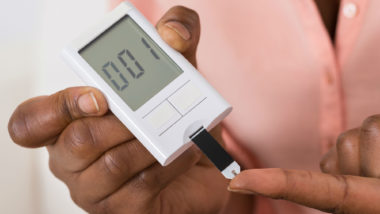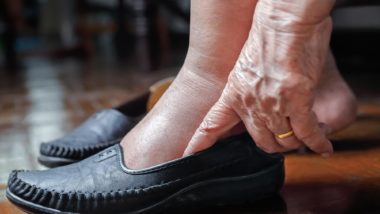Top Class Actions’s website and social media posts use affiliate links. If you make a purchase using such links, we may receive a commission, but it will not result in any additional charges to you. Please review our Affiliate Link Disclosure for more information.
Bad side effects of Jardiance may include risk of amputation of the foot or lower leg, according to recent scientific studies on diabetic patients.
What is Jardiance?
Jardiance (empagliflozin) is a sodium glucose cotransporter 2 (SGLT2) inhibitor prescribed to treat type-2 diabetes. The drug aims to improve blood sugar levels when combined with diet and exercise and to reduce the risk of cardiovascular death in patients with heart disease and type-2 diabetes.
What are the Side Effects of Jardiance?
Common and relatively mild side effects of oral Jardiance may include frequent urination, dizziness, lightheadedness, and dehydration.
Bad side effects of Jardiance are less common, but can occur. Patients may experience hypotension (low blood pressure) with symptoms such as lightheadedness, dizziness, clammy skin, loss of consciousness, and depression. The drug may also be associated with ketoacidosis, severe urinary tract infections, genital yeast infections, allergic reactions, and Fournier’s gangrene, a flesh-eating genital infection.
Recent studies also suggest that patients may be more prone to lower limb amputation as one of the bad side effects of Jardiance.
SGLT2 Drugs and Amputation Risk
An October 2018 study published in the BMJ showed that individuals taking Jardiance and Farxiga (dapagliflozin), another SGLT-2 inhibitor, were at an increased risk of lower limb amputation. The outcomes for more than 17,000 patients on these drugs were compared with the outcomes of more than 17,000 other patients taking glucagon-like peptide 1 (GLP1) receptor agonists, another common diabetes medication.
The study’s results showed that patients on SGLT2 inhibitors were more likely to have a lower limb amputation, with 2.7 amputations as the number of events per every 1000 patient-years – sorted by subgroup. The comparative GLP1 receptor agonist group had only 1.1 amputations per the subgroup. These results show that patients on SGLT2 patients are at a twofold increased risk for needing amputation of the lower limb, including amputations of the toes and foot.
“Our study adds to the data on the safety of these drugs by assessing the association between SGLT2 inhibitor use and serious adverse events in a substantially different population as compared to those included in the clinical trials — a population representative of routine clinical practice,” lead author Dr. Peter Ueda from the Karolinska Institute in Sweden told Medscape.
Ueda noted that the absolute risk of lower limb amputations were relatively small and must be weighed carefully with the benefits of treatment with SGLT2 inhibitors. The drugs can provide significant benefits for cardiovascular and kidney health so these benefits may outweigh the amputation risk in some patients. However, labels on these medications do not fully detail these risks.
Ueda also noted that these results should place a greater level of importance on foot care in diabetic patients, especially those taking SGLT2 inhibitors. Diabetes increases the risk of foot ulcers due to circulation, nerve, and healing problems, so preventative foot care and regular checkups can be essential in avoiding amputations.
“Moreover, patients at high risk of amputation, for example those with peripheral artery disease or foot ulcers, might be monitored more closely if an SGLT2 inhibitor, in particular canagliflozin, is used, and the patient’s risk of this adverse event may be considered when deciding which drugs to use,” Ueda stated.
The amputation risk possibly associated with SGLT2 inhibitors is especially concerning given that amputation is one of the symptoms of diabetes that these drugs aim to prevent. It has not ben proven that SGLT2 inhibitors increases amputation risk. However, examining factors that make diabetes patients vulnerable to amputation in the first place may clarify how the use of these drugs may be linked to amputation.
According to Health.com, diabetes patients are at risk for neuropathy, or nerve damage. Nerves can be damaged by high blood sugar levels. This damage occurs most commonly in the hands and feet. Nerve damage can prevent a patient from feeling pain, which can lead to a diabetic patient not realizing that they have suffered an injury, and not take appropriate steps to manage it. On top of this, it’s far more difficult for diabetes patients’ wounds to heal, another symptom of their condition.
Because people with diabetes are at risk for nerve damage, injury, and poor wound healing, they are in turn at an elevated risk for ulcers. If a diabetes patient develops an ulcer, particularly on the foot, their health situation can quickly deteriorate. Foot ulcers are the most common condition that puts a diabetes patient in the hospital — some 15 percent of diabetes patients will develop an ulcer in their lifetime. About 24 percent of diabetic patients who develop a foot ulcer will require amputation. Diabetic amputation is necessary if an ulcer becomes infected and cannot heal.
SGLT2 drugs work by causing patients to excrete blood sugar through their urine. Because patients excrete more urine than they would normally, they may become dehydrated. Hydration is key to wound healing and infection prevention, so patients who are not properly hydrated may be at higher risks of infection, and subsequently, amputation.
If you or a loved one experienced diabetes amputation after taking Jardiance or Farxiga, you may have a legal claim and may be eligible to seek compensation from the drug maker for your medical and other expenses. Fill out the form on this page now to see if you qualify!
ATTORNEY ADVERTISING
Top Class Actions is a Proud Member of the American Bar Association
LEGAL INFORMATION IS NOT LEGAL ADVICE
Top Class Actions Legal Statement
©2008 – 2024 Top Class Actions® LLC
Various Trademarks held by their respective owners
This website is not intended for viewing or usage by European Union citizens.
Get Help – It’s Free
Join a Free Jardiance, Farxiga Diabetes Amputation Class Action Lawsuit Investigation
If you qualify, an attorney will contact you to discuss the details of your potential case at no charge to you.
If you took Invokana or Invokamet, you do not qualify for this investigation. Click here to join a separate class action lawsuit investigation.
PLEASE NOTE: If you want to participate in this investigation, it is imperative that you reply to the law firm if they call or email you. Failing to do so may result in you not getting signed up as a client or getting you dropped as a client.
E-mail any problems with this form to:
Questions@TopClassActions.com.
Oops! We could not locate your form.













